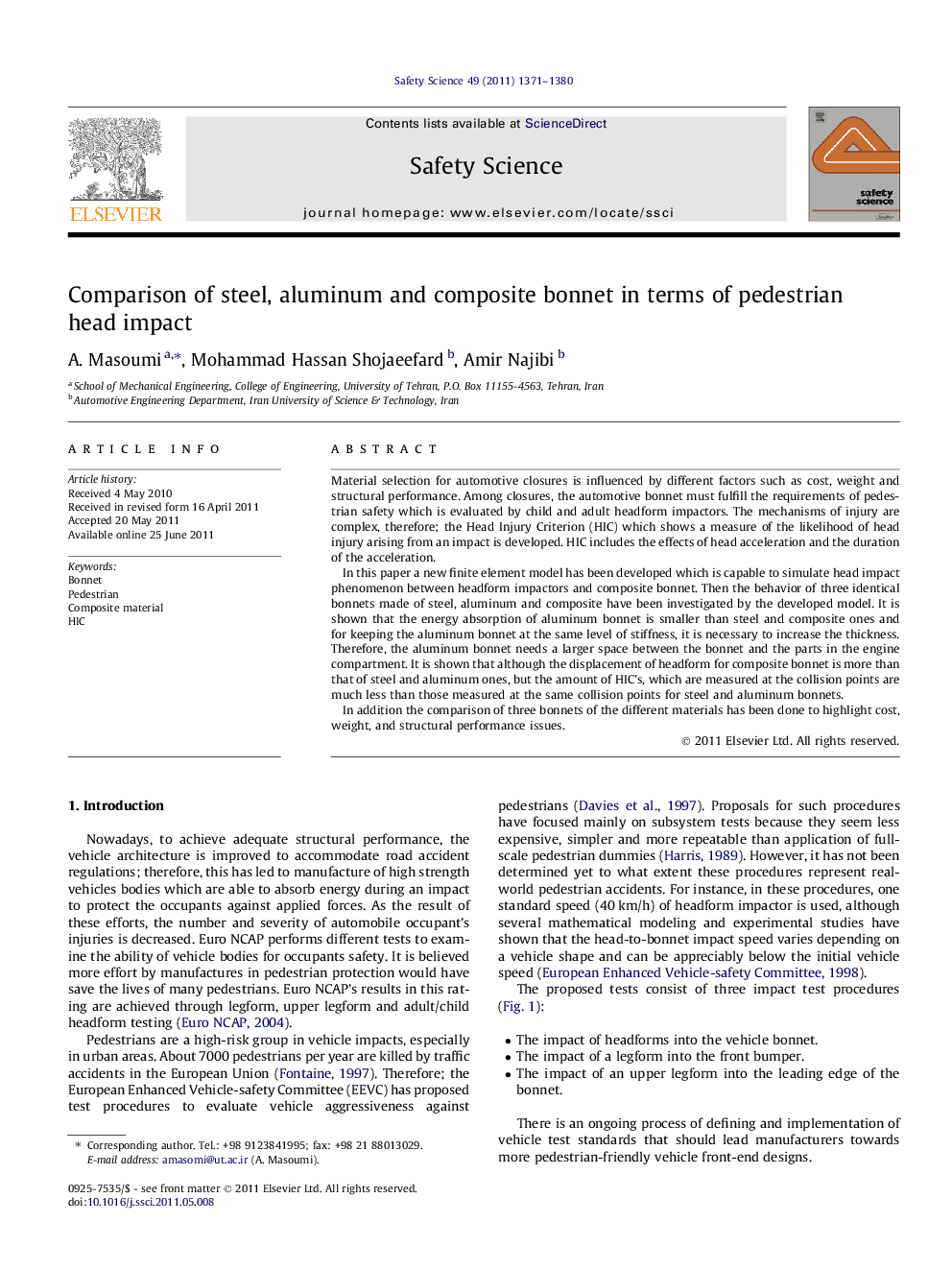| Article ID | Journal | Published Year | Pages | File Type |
|---|---|---|---|---|
| 589831 | Safety Science | 2011 | 10 Pages |
Material selection for automotive closures is influenced by different factors such as cost, weight and structural performance. Among closures, the automotive bonnet must fulfill the requirements of pedestrian safety which is evaluated by child and adult headform impactors. The mechanisms of injury are complex, therefore; the Head Injury Criterion (HIC) which shows a measure of the likelihood of head injury arising from an impact is developed. HIC includes the effects of head acceleration and the duration of the acceleration.In this paper a new finite element model has been developed which is capable to simulate head impact phenomenon between headform impactors and composite bonnet. Then the behavior of three identical bonnets made of steel, aluminum and composite have been investigated by the developed model. It is shown that the energy absorption of aluminum bonnet is smaller than steel and composite ones and for keeping the aluminum bonnet at the same level of stiffness, it is necessary to increase the thickness. Therefore, the aluminum bonnet needs a larger space between the bonnet and the parts in the engine compartment. It is shown that although the displacement of headform for composite bonnet is more than that of steel and aluminum ones, but the amount of HIC’s, which are measured at the collision points are much less than those measured at the same collision points for steel and aluminum bonnets.In addition the comparison of three bonnets of the different materials has been done to highlight cost, weight, and structural performance issues.
► The approximation of vinyl skin with Mooney–Rivlin hyperelastic behavior leads to sufficient accurate results. ► The softer bonnet structure causes reduction in bonnet HIC and increase of deformation. ► The aluminum bonnet leads to better result in HIC and also it is 50% lighter than steel one. ► The composite bonnet provides lower HICs, higher torsional stiffness besides light weighting.
